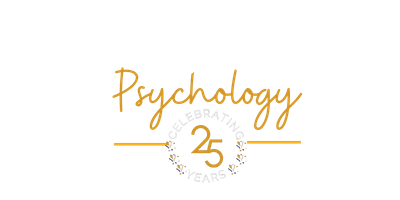What is PDA? (Pathological Demand Avoidance/Pervasive Drive for Autonomy)
You may have recently come across the term “PDA” in the news, on social media, or from a friend or family member. If you’re wondering what it is, or if you’ve recognized some of these characteristics in yourself or someone you know, you’re not alone. Pathological Demand Avoidance (PDA) refers to a specific profile within autism or other forms of neurodivergence, characterized by an extreme avoidance of everyday demands and a tendency to use social strategies to evade those demands.
Though PDA is not officially recognized as a distinct disorder in the DSM-V or ICD-10, it is increasingly understood as a subtype of autism. This profile, first identified by developmental psychologist Elizabeth Newson in the 1970s, was initially considered a separate disorder due to the behaviors exhibited by some children in Newson’s research clinic. These children showed traits of autism but also demonstrated abilities in imaginative play and role-playing.
PDA is best described as a “neurological tug-of-war”—a conflict between the brain, heart, and body. Those with PDA experience a powerful urge to avoid demands, which can make everyday activities and interactions a challenge. While PDA shares many traits with autism and neurodivergence, it is still an area of ongoing research.
Key Features of PDA
- Resisting and Avoiding Demands: Individuals with PDA may avoid tasks and expectations that others might consider routine. They may even want to complete these tasks, but be unable to.
- A Need for Control: This need is driven by underlying anxiety or a fight/flight/freeze/fawn response.
- Social Masking: Although the individual may appear socially adept, masking may hide difficulties in social communication.
- Social Strategies for Avoidance: Individuals with PDA may use sophisticated social strategies to avoid demands, like negotiation, physical incapacitation, and escape into fantasy worlds.
- Intense Mood Swings: Emotions can fluctuate dramatically and quickly, often in response to stress or unmet needs.
- Imaginative Play: People with PDA are often highly imaginative, excelling in role play and fantasy.
- Focus on Others: They may have an intense focus on real or fictional people, including villains or monsters.
- Ineffectiveness of Conventional Support: Traditional strategies and approaches for managing behavior may not work for those with PDA.
What Triggers the Demand Avoidance?
For individuals with PDA, even minor demands can trigger an intense stress or threat response. These demands aren’t always obvious; they can include things like schedules, promises, expectations, desires, or even questions. One of the most difficult aspects of PDA is the inability to cope with self-imposed demands. This can lead to an internal struggle where a person may want to complete a task but feels physically or emotionally unable to do so.
Coping and Self-Help Strategies
Living with PDA often requires thoughtful strategies to manage both everyday demands and the emotional responses they provoke. Here are some effective approaches:
- Choose Your Battles: Minimize unnecessary rules and allow for more choices and control. Be clear about reasons behind expectations but accept that sometimes tasks may be impossible to complete.
- Manage Anxiety: Uncertainty and anxiety are often at the core of demand avoidance. Recognize these triggers and provide support during moments of distress. Think ahead, and treat meltdowns as panic attacks, offering support through them.
- Construct Safe and Calm Environments: Having a low stress environment that the individual with PDA can go to when feeling overwhelmed helps to reduce anxiety. Consider identifying or creating a quiet space such as a “calm down corner.”
- Negotiate and Collaborate: Stay calm and work with the individual to negotiate solutions. Fairness, trust, and collaboration are key to overcoming challenges.
- Disguise and Manage Demands: Frame requests indirectly and monitor how much demand someone can tolerate at any given time. Whenever possible, work together on tasks to reduce the feeling of being pressured.
- Increase Autonomy: Providing opportunities for the individual with PDA to be independent and make their own choices allows them to feel in control and will often decrease avoidance.
- Adaptation and Flexibility: Use humor, distraction, and novelty to make tasks more engaging. Be prepared with alternative solutions (Plan B) and allow ample time for the completion of tasks.
PDA is a complex and often misunderstood profile within autism and other forms of neurodivergence. By understanding its key characteristics and triggers, we can better support individuals with PDA by offering flexibility, control, and a more compassionate approach to managing daily demands. While conventional methods may not always work, these tailored strategies can make a difference in helping individuals with PDA navigate the challenges they face.
Sources:
https://www.autism.org.uk/advice-and-guidance/topics/behaviour/demand-avoidance
https://www.pdasociety.org.uk/about-pda/what-is-demand-avoidance/






